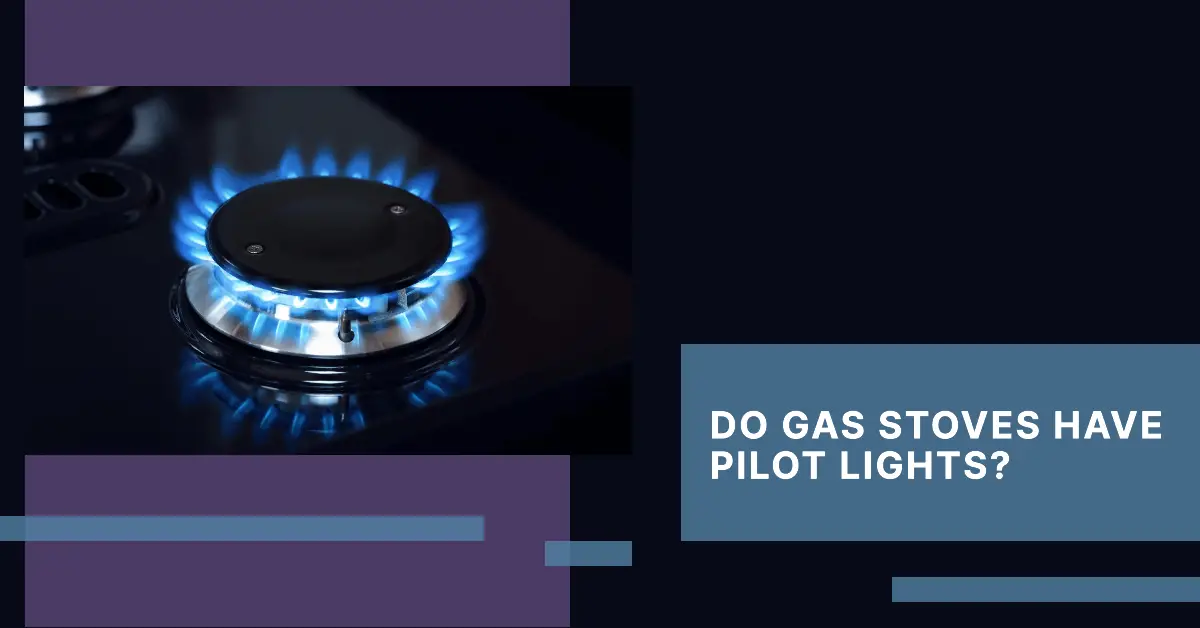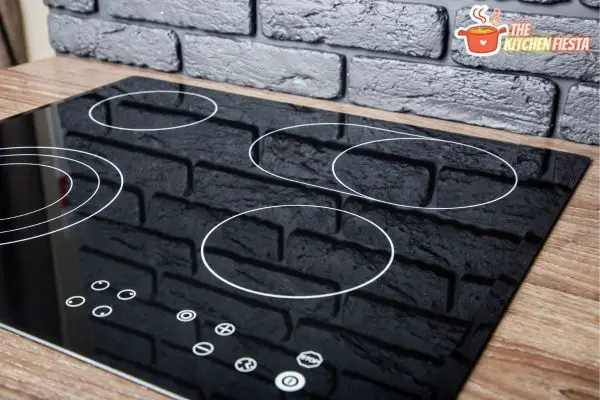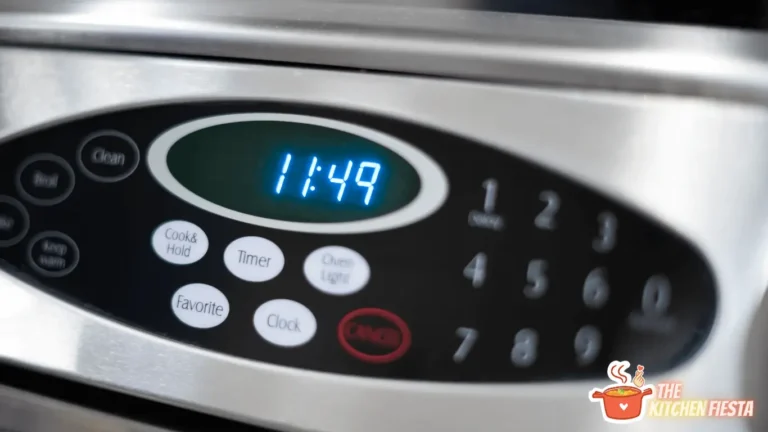Do Gas Stoves Have Pilot Lights? A Complete Guide

If you have a gas stove or are shopping for one, you may be wondering: do gas stoves have pilot lights?
The quick answer is that most modern gas ranges no longer use standing pilot lights. Instead, they utilize electronic ignition to generate a spark and ignite the burner when you turn the knob.
But older gas stove models did often contain a small, constantly burning pilot light. So why did this change?
In this article, we’ll cover everything you need to know about pilot lights and electronic ignition. You’ll learn the pros and cons of each, along with gas stove safety tips.
What Exactly is a Pilot Light?
Let’s start with the basics. What is a pilot light on a gas stove or range?
A pilot light is a small, continuous flame that is always lit in order to provide an instant ignition source for the stove’s burners. It’s called a “standing pilot” because it constantly stays on.
The tiny pilot flame burns right beside the base of each larger burner. When you turn the knob to activate that burner, gas flows out and is ignited by the pilot. This provides immediate fire over the burner.
Older gas stoves and ranges often utilized standing pilot lights to provide a ready ignition source for the burners. It was common for most household gas ranges to contain pilot lights up until the 1980s and 90s.
The pilot flame itself is quite small, usually around an inch tall, and only consumes a minimal amount of gas. But because it burns 24/7, even this small flame does use up some fuel.
Do New Gas Stoves Still Have Pilot Lights?
So do newer gas stove models still use pilot lights? The majority of gas ranges sold for home kitchens today do not have pilot lights.
That’s because most modern gas stoves now use electronic ignition instead of standing pilots.
With electronic ignition, there is no constantly burning flame. Rather, an electric spark ignites the gas when a burner knob is turned on.
Electronic igniters eliminate the need for a pilot light by creating the flame only when needed. They typically heat and discharge an electric spark immediately when activated.
This ignition source sits at the base of each burner. When you turn the knob, gas flows out and is lit by the electric spark.
This provides essentially instant fire over the burner, just like with a pilot. Except there is no flame until the igniter activates when a burner is turned on.
There are some exceptions where standing pilot lights are still found:
- Professional restaurant ranges – Commercial kitchens often utilize pilots for reliability with heavy use.
- Legacy gas stoves – Some homeowners choose to maintain older stoves. These may have pilots.
- RV ranges – Space and venting constraints can make pilots preferable in RVs.
- Outdoor grill burners – Wind and weather are factors for grills, favoring pilots.
But in general for modern household kitchen gas stoves, electronic ignition is now the norm.
Pros and Cons of Pilot Lights vs Electronic Ignition
Now that we’ve covered the basics of what pilot lights are and whether modern gas ranges still have them, let’s compare the relative pros and cons of pilots lights vs electronic ignition.
There are good arguments on both sides. Understanding the benefits and drawbacks can help you decide which you may prefer in a new gas range.
Benefits of Pilot Lights
Here are some of the advantages that standing pilot flames offer:
- Provides instant ignition – With a small flame already burning, turning the knob provides immediate fire.
- Visual check of gas flow – The visible pilot indicates that gas is actively flowing to the burners.
- Reliability – Pilots are a simple, reliable way to ignite burners without electronics.
For some pro chefs, the instant-on convenience of pilots is preferred over electronic ignition. The constant flame also reassures that gas is actively connected. And it eliminates any ignition delays.
Disadvantages of Pilot Lights
However, pilot lights also come with some downsides:
- Wastes gas – The nonstop fuel use of a pilot, while small, does add up over time.
- Can blow out – Drafts or other issues can unexpectedly extinguish the pilot requiring manual re-lighting.
- Generates ambient heat – The open flame produces unnecessary heat when the stove is not being used.
- Reduces indoor air quality – Constant combustion consumes oxygen and releases emissions.
- Fire hazard if left on – A standing flame with gas actively connected increases safety risks.
The continuous gas consumption, excess heat, and air quality impact are key reasons pilots were phased out in most home kitchen stoves. Safety issues also come into play with an open flame when the stove is not used for cooking.
Advantages of Electronic Ignition
Electronic igniters offer their own set of pros:
- Energy efficient – No wasted fuel burning 24/7. Gas is used only when a burner is activated.
- Only ignites when needed – Eliminates unnecessary heat and emissions when not cooking.
- Safer with no standing flame – No open fire hazard when stove is not in use.
- Minimal ignition delay – Sparks immediately within 1-2 seconds when the knob is turned on.
For most homeowners, the efficiency, safety, and convenience benefits of electronic ignition make it the preferred choice over a standing pilot.
Disadvantages of Electronic Ignition
There are also some potential drawbacks to electronic ignition:
- Small ignition delay – There is a brief moment between turning the knob and the flame igniting.
- Dependency on igniter – Failure of the igniter requires repair for the stove to work.
- No visual indicator of gas flow – Unlike a pilot, you can’t instantly see that gas is actively connected.
The only real concession is the split second required for the electric spark to fire up the burner after turning the knob. In practice, this delay is barely noticeable compared to a pilot.
Device failure necessitating repair is a rare but possible downside. Lacking the pilot’s reassurance of live gas is also a small tradeoff.
Gas Stove Safety Tips
Gas stoves provide instant cooking heat, whether from a pilot light or electronic ignition. But gas comes with fire hazards if proper precautions aren’t taken.
Here are some key tips to safely operate your gas kitchen range:
- Keep flammables away – Never store plastics, towels, paper, or other combustibles near the stove.
- Ensure burners are seated properly – Gas won’t flow and ignite correctly if burner caps aren’t aligned with the base.
- Clean reflectors and drip pans – Built up grease under burners can catch fire. Clean regularly.
- Don’t leave cooking unattended – Boilovers, spills and overheating can start fires. Stay nearby.
- Monitor for leaks – If you ever smell gas, do NOT try to light appliances. Leave the area and call the gas company or stove repair service immediately. Do not return to the home until the leak is fixed.
- Refer to manufacturer guidelines – Always consult the user manual for proper operating instructions.
- Consider upgrading older stoves – Modern ranges with electronic ignition include more safety features than legacy pilots.
Staying alert to safety goes a long way towards preventing fires and gas leaks. Follow the tips above along with your stove manufacturer’s guidance for maximum safety when cooking with gas.
The Bottom Line
Standing pilot lights used to be commonplace on household gas stoves and ranges. But most modern kitchen gas ranges now use electronic ignition instead of a constantly burning pilot flame.
There are good arguments on both sides in the pilot light vs electronic ignition debate. Pilots provide instant-on convenience and indicate gas flow. But electronic ignition eliminates waste, ambient heat and improves safety.
For most homeowners, the efficiency and safety benefits of electric ignition outweigh the minor convenience of a standing pilot. And the instant ignition delay is barely noticeable compared to a pilot.
If you’re shopping for a new gas range, understanding the pilot light vs ignition options can help guide your buying decision. While personal preference plays a role, electronic ignition offers compelling advantages for most people.
Whichever ignition system you choose, adhere to basic gas stove safety practices. This will ensure safe, reliable cooking with your gas range.






